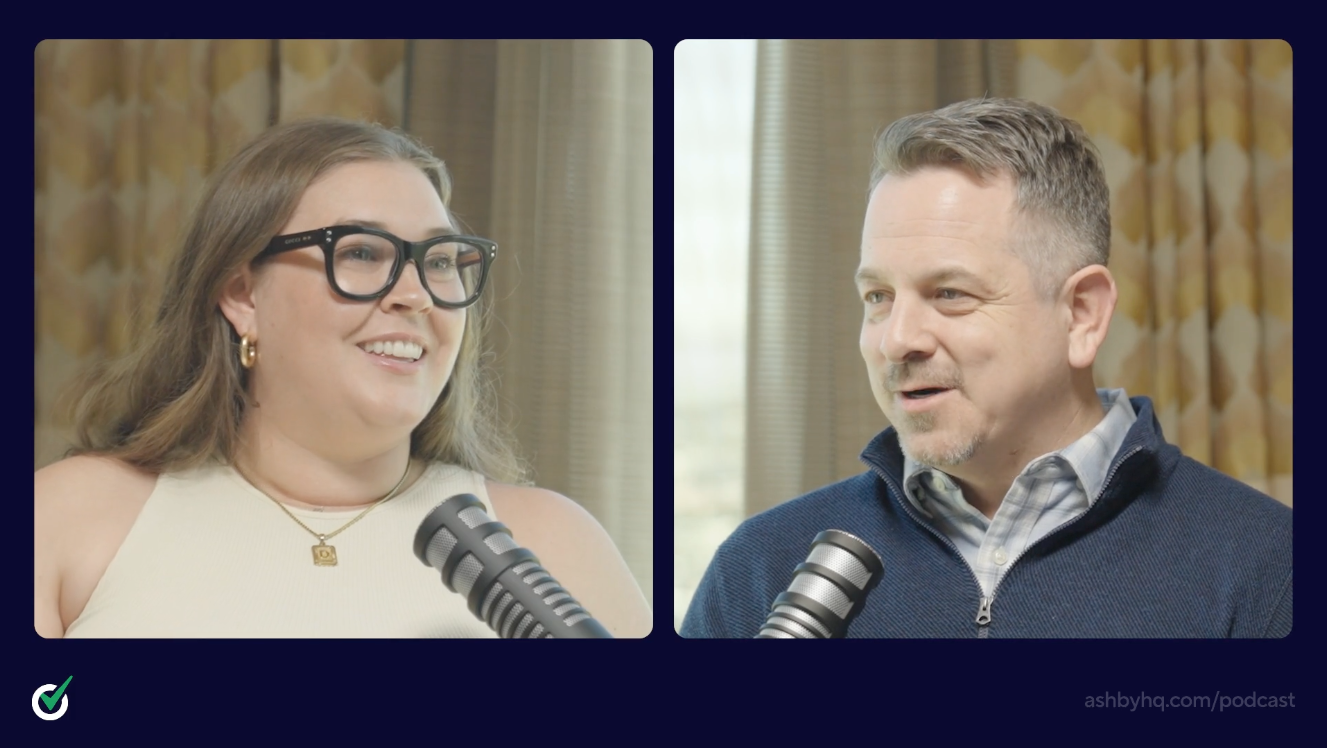Simplifying Recruiting Metrics to Improve Team Performance
About this Episode
Bryan Power is the Chief People Officer at Nextdoor, where he leads all things people, culture, and talent. With more than 20 years of experience at companies like Yahoo and Square, Bryan brings an operator’s mindset and a recruiting-first lens to building and scaling teams.
In this episode of Offer Accepted, Bryan shares how his team uses the AAA recruiting framework to track the right metrics, clarify decision points, and build a consistent hiring experience without losing the human touch. He explains how simple metrics drive better conversations with hiring managers and why a strong process is key to helping recruiters show up at their best. This episode is packed with tactical insights for TA leaders who want to create clarity in complexity.
Topics
This Episode's Guest
Bryan Power
Chief People Officer @ Nextdoor
Bryan Power is the Chief People Officer at Nextdoor, where he oversees talent, culture, and people operations. He previously held leadership roles at Square and Yahoo and has built high-performing teams across every stage of company growth. Bryan is known for his practical, systems-oriented approach to recruiting and for championing the strategic impact of talent teams across the business.
Takeaway 1
Diagnosing root causes with simplified data 🔍
Nextdoor’s AAA framework simplifies recruiting by breaking it into three distinct stages: Attraction, Assessment, and Acquisition. Each stage is tied to a specific goal and has a check-in metric to make sure teams aren’t solving the wrong problem.
Why It Matters:
Recruiting challenges get blurry when the funnel is treated as one motion. By separating each phase, teams can pinpoint issues more effectively and respond with targeted solutions.
Quick Tips:
- Attraction tracks applicant volume, with recruiter screens as a check. If you’re seeing lots of applicants but very few recruiter screens, you may be attracting unqualified candidates or screening too aggressively and missing strong fits.
- Assessment tracks interviews, with offers as the check. Bryan often hears hiring managers push for maintaining a "high bar," but if you're conducting dozens of interviews without extending offers, the issue may lie in inconsistent or overly rigid evaluation criteria.
- Acquisition tracks offers accepted, with offer acceptance rate as the check. Losing candidates late in the process is one of the most expensive hiring problems. Bryan emphasized how critical it is to treat this stage with care and urgency.
Takeaway 2
Use Metrics to Guide the Right Conversations 📊
Bryan’s team uses a simple metric pairing at each stage to create focus without overcomplicating the process. The intent is not to track everything, but to steer energy toward what matters most.
Why It Matters: Hiring managers don't need more dashboards. They need context that helps them understand what’s working, what’s not, and where they can help. Bryan uses these paired metrics to shift conversations from instinct to insight.
Quick Tips:
- Tailor how you present data. Bryan shared how engineering leaders once saw a 10 percent pass-through rate as a badge of quality. When he reframed that as a 90 percent failure rate costing hundreds of engineering hours, the problem became clearer. The metric didn’t change, the positioning did.
- Don’t default to “go source more.” It’s common for hiring managers to request more pipeline. The AAA framework helps recruiters diagnose exactly where problems are happening so they can be addressed directly, not just buried under more volume.
- Review the funnel monthly. Bryan recommends monthly reviews to give patterns time to emerge without reacting to noise. This rhythm allows the team to zoom out, understand which part of the process needs work, and enter leadership conversations with confidence and clarity.
Takeaway 3
Consistency should never feel transactional ✨
Bryan believes that structure is the foundation of a great candidate experience, but structure alone is not enough. His team works intentionally to make every candidate feel like the process was designed for them, even when it’s scaled across hundreds of roles.
Why It Matters: Candidates only experience your process once, even though recruiters go through it many times a day. That disconnect can make the experience feel routine if teams aren't intentional. Creating space for consistency and care ensures candidates walk away feeling seen.
Quick Tips:
- Create shared expectations for each stage of the funnel. At Nextdoor, the team aligns around what success looks like in Attraction, Assessment, and Acquisition. This clarity helps everyone move quickly without sacrificing consistency.
- Use candidate survey feedback to improve the experience. Bryan’s team reviews this feedback monthly to catch signs that something feels off or impersonal. Small changes informed by this data can lead to big improvements in how the process is received.
- Balance repeatability with human connection. Bryan noted that while recruiters may run the same steps over and over again, the candidate only sees it once. Great recruiters bring energy and presence to each conversation so no one feels like just another name in the system.
What Hiring Excellence Means to Bryan
For Bryan, Hiring Excellence is about building a consistent process that still feels thoughtful and personal. It’s about being intentional at every step while remembering that what feels routine to you might feel life-changing to the candidate on the other end.
>> Watch the Clip

Bryan's Recruiting Hot Take 🔥
Recruiters are more trusted than they realize. Bryan believes this trust opens the door to far more than just filling roles. Because recruiters are often the first and strongest relationship a new hire builds, they are uniquely positioned to shape team culture, solve business problems, and lead beyond the pipeline.

Timestamps
(00:00) Introduction
(02:36) The role of leaders in headcount conversations
(02:42) The three As: Attraction, Assessment, Acquisition
(06:27) Balancing pipeline recruiter focus
(08:40) Evaluating sourcing channel noise
(10:17) Data for hiring alignment
(12:53) Engineering’s 90% failure rate
(16:55) Diagnosing core team issues
(19:35) Standardizing key recruiter moments
(24:31) Relationships drive offer acceptance
(28:20) Recruiters trusted beyond hiring
Other Episodes
Building Stronger Talent Strategy Through Co-Design
In this episode of Offer Accepted, Blair Bennett, SVP of Global Talent Acquisition at PepsiCo, shares how co-designing with the business leads to better outcomes for recruiters, hiring managers, and candidates alike. Shannon and Blair talk through the process of building a global interview framework and how involving stakeholders early drives buy-in and builds credibility. Whether you’re designing at scale or just starting to introduce new systems, this episode offers tactical insight into how to lead change through collaboration.
How a Strategic Point Person in RecOps (Early) Elevates your Organization
In this episode of Offer Accepted, your host Shannon Ogborn sits down with Max Butler, Head of Talent Operations at CaptivateIQ, to discuss the benefits of hiring a Recruiting Operations person early in your company’s life.

Join the Hiring Excellence movement
New episodes every month - subscribe here so you never miss out.
